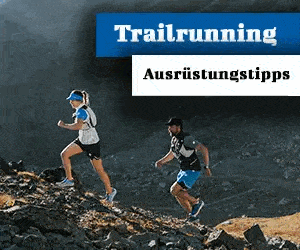On his third attempt, the weather, conditions and physical and mental condition were perfect. On March 21, the professional alpinist David Göttler reached the summit of Mount Everest solo and without additional oxygen. A conversation about risk management, expectations and inspection styles.
David Gottler, Congratulations. How does the summit success feel with a little time and geographical distance?
Thanks very much. It was a pretty good day up there. I haven't really been able to classify or process it yet. As if everything always goes so fast. But it's slowly arriving.
What was it like at the top? Have you ever felt happiness?
Rather less. On the one hand, there is a certain relief that you no longer have to climb further up. On the other hand, I was still very tense and energized on the day of the summit. Because I knew that I had to get back to the South Col from the main summit. There are a few tricky passages, fortunately I was completely alone.
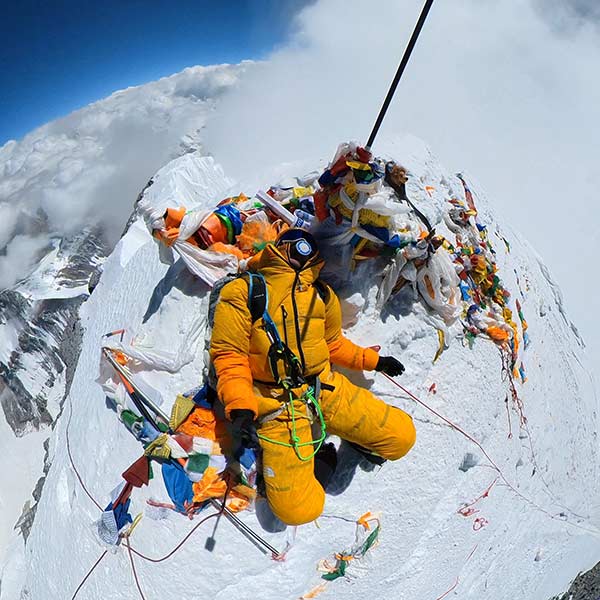
How tricky?
Since there was relatively little snow this spring, there was before the HillaryStep an unpleasant record passage. Climbers and boulderers would now lick their tongues and say: Hey, that's a great bouldering problem. But at 8700 meters, without oxygen and with crampons, this is not so tempting.
Either you go over a shaky ridge or something below. I chose the lower variant, where you scratch the plate with your crampons and somehow cling to the upper edge with your hands.
In such passages you have to concentrate fully and it just takes an incredible amount of strength. After three moves up there, you immediately sit down and breathe for what feels like an eternity.
"Climbers and boulderers would now lick their tongues and say: Hey, that's a great bouldering problem. But at 8700 meters, without oxygen and with crampons, this is not so tempting. "
David Gottler
In how many stages did you divide your ascent at the Summit Push?
I ascended to camp three from base camp on day one. Then I spent the whole day recovering there and the next morning I went to camp four at 7900 meters. After a few hours break, I set off towards the summit at half past nine in the evening. It took me exactly twelve hours and 20 minutes from the last camp on the South Col to the highest point.
I then descended again to camp three on the same day. I had a tent and an insulating mat in camp four, but no sleeping bag. That's why I didn't want to spend the night there, which would have been too high and too dangerous after the summit.
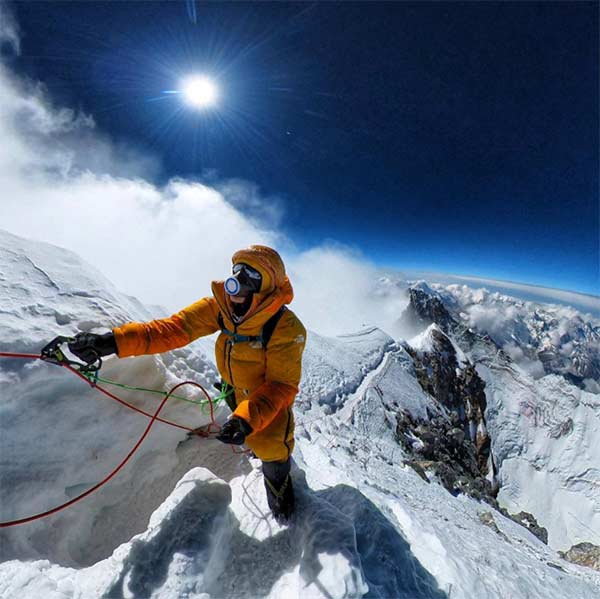
What role has your experience from 2019 and 2021 played in your strategy?
A very important one. Every attempt, every expedition has somehow contributed to this. For example, I changed my tactics and went from base camp straight to camp 2 instead of just to camp XNUMX as I used to. Because it was always a very long day from there to the South Col.
It was a double-edged sword up on the mountain. Of course, one always compares with these old experiences. If you then feel worse than in the previous attempts, this can really affect your mood. You have to be able to switch it off mentally somehow.
"If you go somewhere that often, you just run the risk of raising your own expectations or comparing them to older experiences."
David Gottler
I worked a lot with a mental trainer beforehand. And it really helped. When you go somewhere that often, you just run the risk of raising your own expectations or comparing them to older experiences.
What are the risks of your climbing style on Everest, i.e. going solo and without additional oxygen and how do you deal with it?
Of course there is an increased risk. On the other hand – and you saw that in previous years – I'm more likely to turn around. I'm already aware of the risk. Just because I've been doing it for a very long time and have been able to gain a lot of experience.
Sometimes I see people who are on an eight-thousander for the first time and want to go straight away without oxygen and without Sherpas. They sometimes take risks that it makes the hair on the back of my neck stand up. I do think I'm moving in a different area. You just have to be able to turn around and just can't push that far.
“For example, if you have a Sherpa with you to carry your emergency oxygen, you can push until you tip out of your shoes, even if you try without it. Because if he then gives you oxygen, you're suddenly Superman."
David Gottler
And that's exactly why these style nuances are so important. For example, if you have a Sherpa with you to carry your emergency oxygen, you can push until you tip out of your shoes, even if you try without it. Because if he then gives you oxygen, you're suddenly Superman.
And I just don't have that. With every passage I thought about it and tried to listen to myself to see if I could still do it on the way back, if I still had the strength. If the weather had been a little less perfect, it would have been a completely different game again. This year I felt mentally very fit. You have to weigh all these factors all the time and that's the difficult part.
"With every passage I thought about it and tried to listen to myself to see if I could still do it on the way back, if I still had the strength."
David Gottler
I wouldn't describe myself as a gambler or a person willing to take risks. I think you can see that from my history, how often we turned around. Of the Everest was my last really successful eight-thousander expedition after 2013, where I was really at the summit. At the Shishapangma for example, we turned back 20 meters below the summit because the last passage was too dangerous for avalanches.
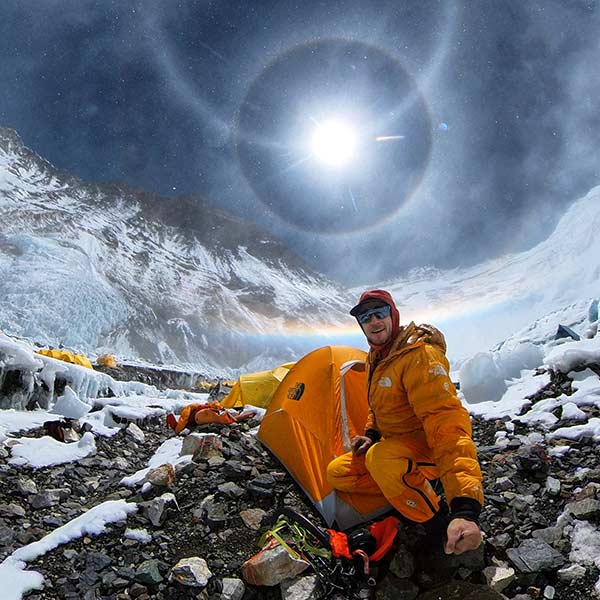
In a recent Insta post you talked about pride and ego in relation to Everest. What drives you inside?
Deep inside, it's curiosity. How do I function on those last 100 meters? How does that feel? And then also the sporting aspect of reaching the highest point on earth in what I consider to be a fair style. That's the motivation.
But it is precisely when you have such goals that you keep coming back to and that demand so much of you that you run the risk of losing yourself. One wonders whether this will become one's own mountain of fate and whether oneself will become Sisyphus. That's part of it, even if it's not what you want it to happen.
"At the moment I'm still a little torn with some feelings. But in the end it feels like forever.”
David Gottler
What are you taking away from your recent ascent?
It's difficult to describe. It's such a fulfillment and satisfaction that comes at some point. At the moment I'm still a little torn with some feelings. But in the end it feels like forever.
I know that from other eight-thousanders that I climbed. Or from other goals that I have worked towards for so long and in which I have invested so much energy, strength, endurance and mental energy. That carries me incredibly long and motivates me over the years.
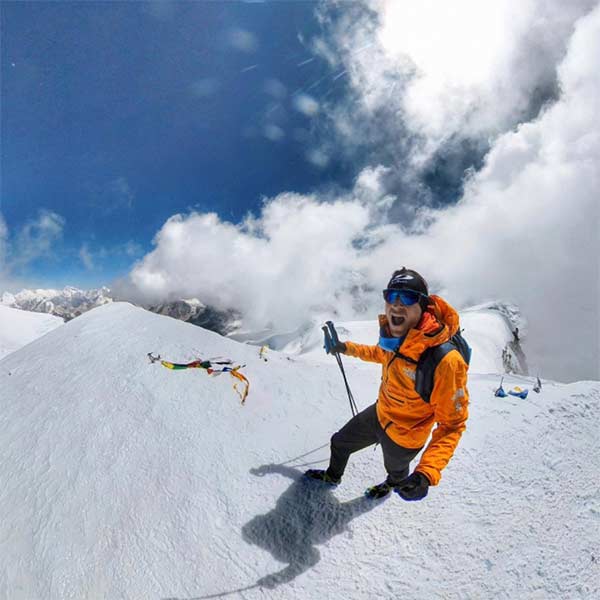
You have climbed all your previous eight-thousanders alpine style and without supplemental oxygen. Why is this so important to you?
It's just the way I learned to climb mountains. I grew up in the Alps and went mountaineering with my father. Then I came to expedition mountaineering through the DSV squad.
I've learned that I'm independent, that I don't have anyone to carry my things with me, pitch my tent or boil water for me. And thank God this oxygen issue wasn't there at the beginning. We started with six-thousanders and you didn't use oxygen there.
“For me it is also the form that is fair to the mountain. The difficulty on an eight-thousander is that there is much less oxygen at this altitude.”
David Gottler
I was allowed to climb my first eight-thousander in a very experienced team Gerlinde Kaltenbrunner, Ralf Dujmovits, Michi Wärthl, Eero Gustafsson and Hirotaka Takeuchi do. All of them were more or less the first to climb the 14 eight-thousanders in their countries. And everyone always made it a point that it was without oxygen.
For me it is also the shape that is fair to the mountain. The difficulty on an eight-thousander is that there is much less oxygen at this altitude. Whether you use fixed ropes or not can be compared to whether you climb a route with bolts or trad. But as soon as I put on an oxygen mask, I eliminate this difficulty of nature.
After your inspection, you clarified relatively quickly and in great detail which infrastructures you used selectively. Did you want to take the wind out of the sails of your critics?
I just wanted to show a style that I would like to see communicated in Himalayan mountaineering. I don't want to judge which style is better or how anyone should do it. Everyone should do what they want. In mountaineering we have the luxury of not having any rules.
“In mountaineering we have the luxury of not having any rules. But what this means is that we really should be incredibly honest.”
David Gottler
But what this means is that we really should be incredibly honest. When everyone takes off their oxygen mask for the summit photo, so that you have to look for it and they don't mention anything, then that frustrates me.
This is usually only mentioned in the tenth post, but then no one cares about it. I wanted to do it the other way around this time and now that the media attention is still high, say that I used this or that.
Who do you see as having a duty so that there could be a more differentiated public perception of the eight-thousander ascents?
Actually everyone: The media, the journalists, the athletes themselves, who still have to explain a lot more, as well as the companies and sponsors, who also deal with it incredibly badly and do themselves no favors in the long run.
"It's like comparing a 9a trad climb to a via ferrata."
David Gottler
We need to start differentiating. As I said, I have no problem with 500 people climbing Everest with oxygen, being pulled up and being flown down from camp two by helicopter, which is now standard.
For me, this is simply not an achievement worth mentioning in general. And for me it has nothing to do with eight-thousander mountaineering in the true sense. It's like comparing a 9a trad climb to a via ferrata.
That might interest you
- High-altitude climber Simone Moro in an interview
- K2 without artificial oxygen: how was it possible? | Show BETA
- Nirmal Purja: doubts about credibility | research
Do you like our climbing magazine? When we launched LACRUX, we decided not to introduce a payment barrier. It will stay that way, because we want to provide as many like-minded people with news from the climbing scene.
In order to be more independent of advertising revenue in the future and to provide you with even more and better content, we need your support.
Therefore: Help and support our magazine with a small contribution. Naturally you benefit multiple times. How? You will find out here.
+ + +
Credits: Cover picture David Gottler


